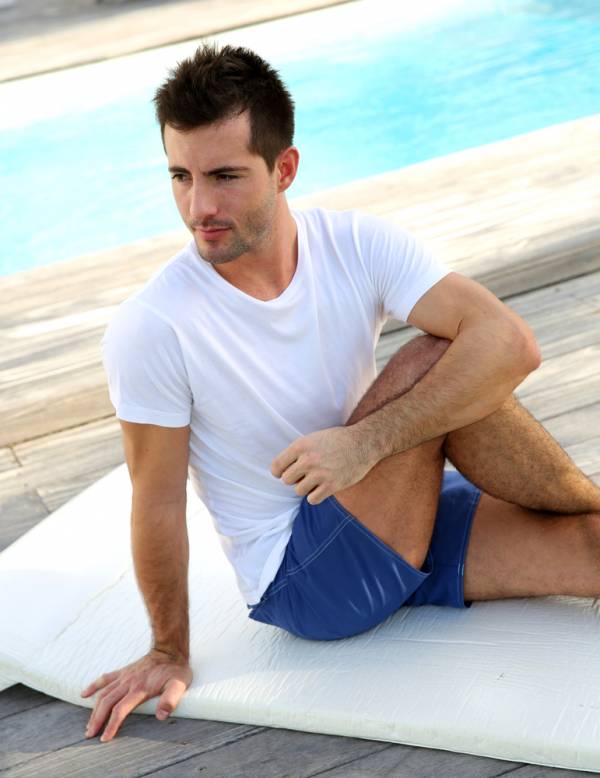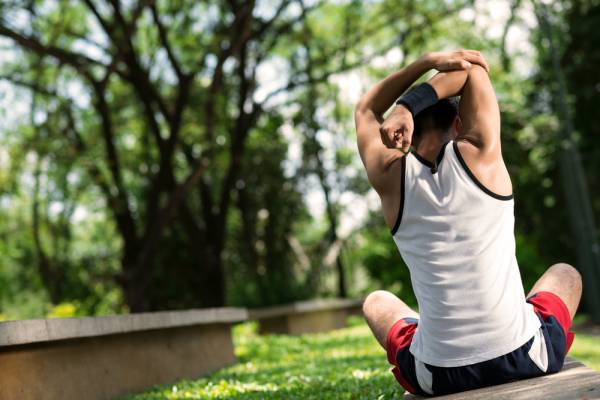Flexibility is one of those things that people seem to believe you were either born with or you weren’t. As if there is some wonder-gene that allows you to do the splits. That’s just not the case, and I’ll explain why you aren’t getting a result from your flexibility program in one word:
Discipline.
Adding flexibility takes the same amount of effort and focus as increasing any other facet of your physical abilities. Let’s flip the situation around and suppose that instead of wishing to increase your flexibility you wanted to get better in your martial art or get stronger. Hopefully you’d go and spend the time to do multiple sessions per week, likely adding up five or more hours of work on that skill or ability. But for some reason when it comes to flexibility we toss that idea out the window and instead hope to see increases from a few minutes tacked onto the end of a workout when you remember.
So the first step to increasing flexibility is to give it the attention it deserves. And like any other aspect of fitness you’re looking to improve, that means multiple sessions each week solely dedicated to adding range of motion. Charles Poliquin estimates it takes six hours per week for six weeks to see a measurable improvement in flexibility. For many that will be hard enough as most people can’t stick to a plan for more than a week or two at best. But if you do manage to stick to this plan, the results are well worth it (and not just for your martial practices, as they carry over to the rest of your life too).
Discipline is important for the next part of flexibility training also. You know that feeling you get when you stretch a muscle and it feels tight? Do you know that tightness is your own body trying to protect you from damage? What happens is the muscle senses a change in length that the nervous system deems potentially dangerous. To avoid injury the muscle tightens up to prevent any further elongation and potential harm. Basically, the body puts the brakes on for you because it thinks you might hurt yourself.
 As we get older we actually end up with less and less range of motion because we do less and less. Think about it – if you’re twenty years old, you’ll have spent about fourteen years sitting down (enter school at age six and then spend most of your time at a desk during school hours and then again for homework, plus add in time spent sitting for meals, travel, and activities like video games). But, if you’re forty, you’ll have accumulated 34 years of spending a majority of your time sitting. All that time spent sitting tells your body that it only needs to work in a limited range, that the hips only ever need to be at roughly at ninety degrees, that it’s normal for the upper body to hunch and the shoulders to round. Just like if you spent 34 years punching a bag and your body got really good at punching the bag, you’re spending lots and lots of time on reps that make your body really good at being in the seated position.
As we get older we actually end up with less and less range of motion because we do less and less. Think about it – if you’re twenty years old, you’ll have spent about fourteen years sitting down (enter school at age six and then spend most of your time at a desk during school hours and then again for homework, plus add in time spent sitting for meals, travel, and activities like video games). But, if you’re forty, you’ll have accumulated 34 years of spending a majority of your time sitting. All that time spent sitting tells your body that it only needs to work in a limited range, that the hips only ever need to be at roughly at ninety degrees, that it’s normal for the upper body to hunch and the shoulders to round. Just like if you spent 34 years punching a bag and your body got really good at punching the bag, you’re spending lots and lots of time on reps that make your body really good at being in the seated position.
When it comes to skill training it’s not just a matter of doing reps. The way you do them is important. And for every bad rep you do, you’re going to need extra god reps to overcome the bad ones. That’s why flexibility training is so hard for many – they need to spend time overcoming all the damage they have done from years of sitting.
It’s not all bad though. That muscle stiffness you feel when you get to a point the body thinks is dangerous can be overcome. It just takes discipline. Many people make the mistake of cranking on a stretch as hard as they can until they get to the point where the body tightens up maximally for protection. The problem is the body will actually add tension in that position to protect you more. So as you sit in the stretch it will become more uncomfortable. The trick is to go to the edge of that, the point where it’s just starting to become noticeably tight. It needs to be comfortably uncomfortable because you’re going to need to hang out at that point for a while.
As you sit in the stretch you’ll notice the body starts to tighten more and more in its efforts to protect you. Just relax as much as you can and try to breathe deeply. You may have to endure all kinds of weird things like cramps, muscles or limbs shaking, and even a slowly increasing amount of tension that you may think is pain. The body will play all sorts of games to get you to stop what you’re doing and let the muscles return to their normal length.
 But if you hang out for long enough this amazing thing will happen – the body will just relax all of a sudden. Once it recognizes that it’s not under any threat or danger of injury, the tightness you feel in your muscles will disappear allowing you to stretch further and repeat the process. The hard part is that the older you are the longer this will likely take.
But if you hang out for long enough this amazing thing will happen – the body will just relax all of a sudden. Once it recognizes that it’s not under any threat or danger of injury, the tightness you feel in your muscles will disappear allowing you to stretch further and repeat the process. The hard part is that the older you are the longer this will likely take.
And this is where discipline comes in again. For adults to gain appreciable amounts of flexibility will take time, consistent effort, and pain tolerance to sit in a given position until the body recognizes there is no threat. Over time this process will quicken and less time will be needed. The key is this – waiting out the tension part of stretching.
Many people will want to argue at this point that dynamic stretching is better and gives faster results. Yes, it does, but they don’t last unless you’re already very flexible. Think of dynamic stretching as the sports performance side of stretching. Before you get sports performance you need general preparation, and it in flexibility terms that is static stretching. To make real long-term improvement in your range of motion, you’ll need static stretching as a base before adding on dynamic stretching. Just remember that it takes discipline and consistency to build, just like any other aspect of fitness. A few minutes at the end of your workouts won’t really have much impact compared to the decades of shortened movement and sitting you’ve done.
The benefits of flexibility are so great that training experts like Ian King call flexibility the “last frontier of human performance.” King also said:
Flexibility, generally speaking, is the most important physical quality. The impact of the flexibility on all other physical qualities is greater than the one of any other single physical quality. Flexibility potentially improves strength, speed and endurance more than any of these qualities impact on the other. In addition, I believe of all physical qualities, this one has the greatest impact on injury prevention. Flexibility training also potentially has the greatest contribution to recovery of all the physical qualities.
When you combine performance increase and injury prevention with actually helping to make you feel and move better in the rest of your life, I’m sold on flexibility. Just remember to give it the same attention any other aspect of fitness would get and then be disciplined and consistent.
Photos courtesy of Shutterstock.






